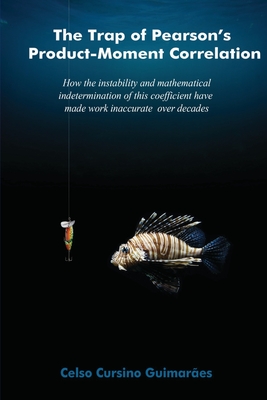You are here
Back to topThe trap of Pearson's product-moment correlation: How the instability and mathematical indetermination of this coefficient have made work inaccurate o (Paperback)
$19.00
Usually Ships in 1-5 Days
Description
Do you really believe Pearson correlation r>=0.70 is strong and reliable enough? Maybe not
Sensitivity to outliers in small-N samples, lack of robustness, given its limitation for assessing nonlinear relationships and now, a new flaw has been discovered as mathematically indeterminate of Pearson's product-moment correlation coefficient, i.e., the zero-by-zero division, when the variance of one of the covariates is mainly composed of residuals. This feature is difficult to demonstrate, as Pearson's coefficient relies on deviant data points, which hide the coefficient's indeterminacy. If a variable's relationship to its counterpart is mainly determined by residuals, then, analogous to Heisenberg's uncertainty principle (1925), our knowledge of an element's position at a single point in time is inversely proportional to its counterpart- that is, the more we know about one, the less we know about the other. In this case, the only element that can represent a variable x is its own expected value, i.e., its mean. Thus, the explanatory capacity of its covariates is nullified, rendering Pearson's coefficient-and any other regression-based analysis-unfeasible. This conclusion demands a prior analysis of both variables since their pairing leads to a transfer of one's randomness to the other. To manage the limitations of Pearson's product-moment correlation coefficient, I provide a method for identifying the proximity to the mathematical indeterminacy aforementioned.
Throughout this book, I demonstrate my thesis using numerous examples of the instability and lack of logical or scientific support of results stemming from Pearson's coefficient, including results that are allegedly strong. The use and interpretation of Pearson's product-moment correlation coefficient relies on a set of unrealistic premises that severely damage the credibility of the results. What is there to say then of its inferential capacity and its ability to show causal relationships, which are herein deemed its most improper implications?
